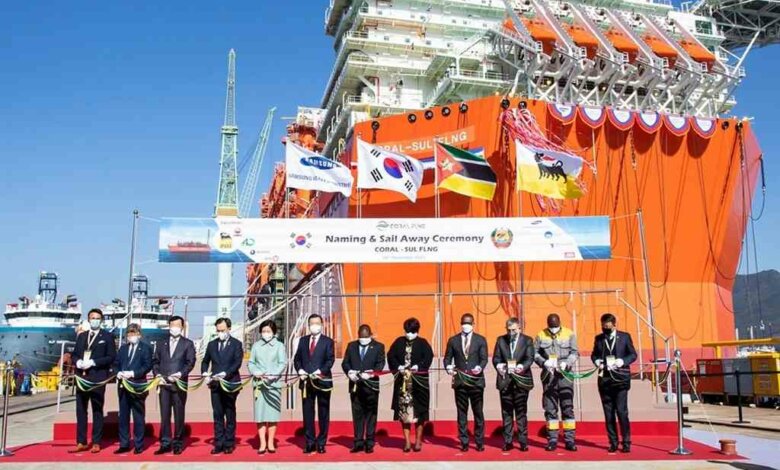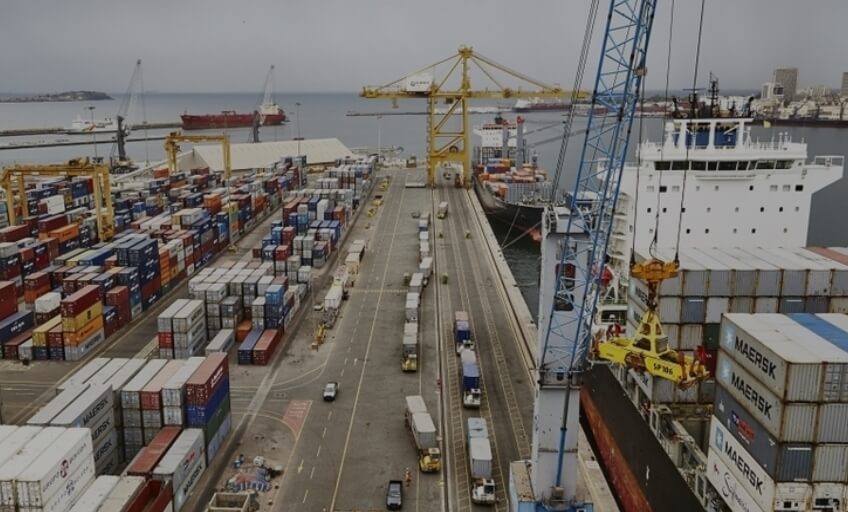Mozambique: Africa’s First Floating Gas Plant Docks

Africa’s first deep-sea floating Liquified Natural Gas (LNG) facility has arrived in Mozambican seas after a seven-week journey, marking a crucial milestone ahead of the start of production from an offshore gas field.
The Coral Sul FLNG floating plant landed in Area 4 of the Rovuma Basin this week, according to Mozambique’s National Petroleum Institute.
The 220,000-ton vessel, whose major component was built in South Korea by Samsung Heavy Industries, is the first FLNG built for deep oceans and the first FLNG built expressly for Africa. The plant, which is 432 metres long and 66 metres broad, can liquefy 3.4 million tonnes of natural gas each year.
The plant is vital to Eni’s $7 billion (R110 billion) Coral South project. It will extract gas from the southern section of the field and sell it.
It will be connected to six subsea gas producing wells, with its LNG destined for BP under a 20-year offtake arrangement struck in 2016.
ExxonMobil, the China National Petroleum Corporation, Empresa Nactional de Hidrocarbonetos, Galp Energia, and the Korea Gas Corporation are Eni’s Area 4 partners.
Read Also: Morocco and China Sign the Belt and Road Initiative Agreement
The Coral Sul FLNG set out from South Korea on November 15 and arrived in Mozambique seas on January 3. The vessel’s arrival, according to the National Petroleum Institute, represents “a milestone in the project’s implementation.”
A rigorous process of anchoring, surveys, inspections, and certifications has commenced since the vessel arrived in Mozambican waters, with the goal of awarding the vessel an operating licence so that production can begin as scheduled in the second part of the year.
The installation campaign, according to Eni’s website, includes mooring and hook-up activities at a water depth of roughly 2000 metres using 20 mooring lines weighing a total of 9000 tonnes.
Eni will provide professional training for around 800 Mozambican workers who will be employed in the project’s operational phase as part of the Coral South project.
The corporation stated that it has committed to a “huge programme of work” for local communities to increase their access to essential services like education, clean water, and health care, while also promoting long-term, diverse, and sustainable socio-economic progress.
The Rovuma basin is home to a number of energy projects, including Coral South.TotalEnergies’ far larger $20 billion Mozambique LNG project is also under construction. After the location was evacuated in March of last year as a result of adjacent Islamic State terrorist strikes, work has yet to restart.
Read Also: Why Zambia’s Currency Leaped 27% Against the Dollar Last Year
ExxonMobil’s $30 billion Rovuma LNG project, which was postponed in 2020 because to a drop in oil prices caused by the Covid-19 epidemic, is still awaiting a final investment decision.
“It is great news for Mozambique and the region that Coral FLNG is now in Mozambique, ahead of commissioning. 3.4 million tons per annum of LNG can support 4 GW of base load cleaner gas to power and demonstrates that Mozambique’s LNG developments continue, despite the pandemic and other challenges.”
– Paul Eardley-Taylor, Standard Bank’s head of oil and gas for Southern Africa.
Across the border in South Africa, the government has long paid lip service to developing a gas economy, but the pace has been frustratingly slow for many industry proponents. Climate concerns have made it more difficult than ever for oil and gas companies to pursue new projects – as shown by fierce opposition to Shell’s plans to conduct seismic surveys off SA’s Wild Coast.
The arrival of the Coral Sul FLNG is yet another reminder of where South Africa could have been, if it had sprang into action sooner to develop a local gas economy said Niall Kramer, an independent energy consultant.
Gas will likely play a role in the move away from fossil fuels and toward renewables, according to Kramer, as indicated in the Integrated Resource Plan 2019, the national electrical infrastructure blueprint.
According to Kramer, South Africa needs to create a climate that is appealing to gas investors, who are investing in neighbouring countries such as Namibia and Mozambique despite political and security challenges.
While Kramer acknowledges that some progress has been made – the most recent example being the introduction of a draught gas master plan – he believes that South Africa’s gas and renewables policy and implementation suffers from “sheer ineptitude” and a “lack of vision” on the route to renewables.
Source: Fin24
Abeeb Lekan Sodiq is a Managing Editor & Writer at theafricandream.net. He is as well a Graphics Designer and also known as Arakunrin Lekan.





